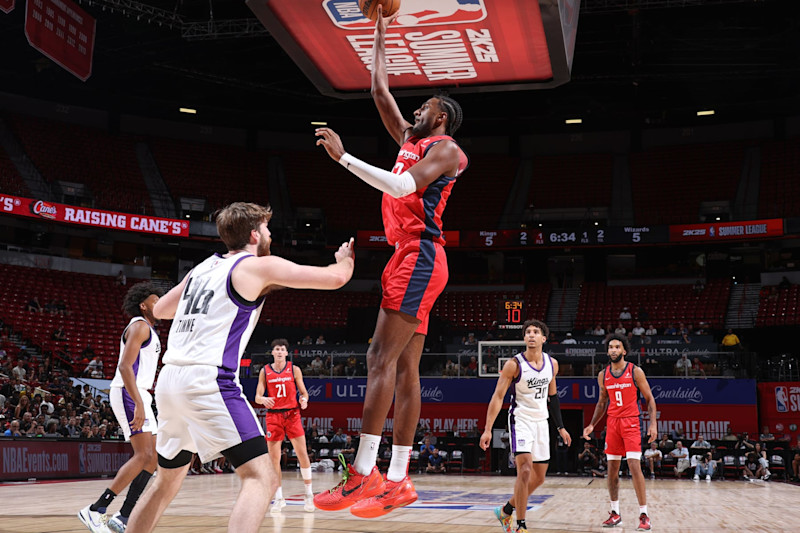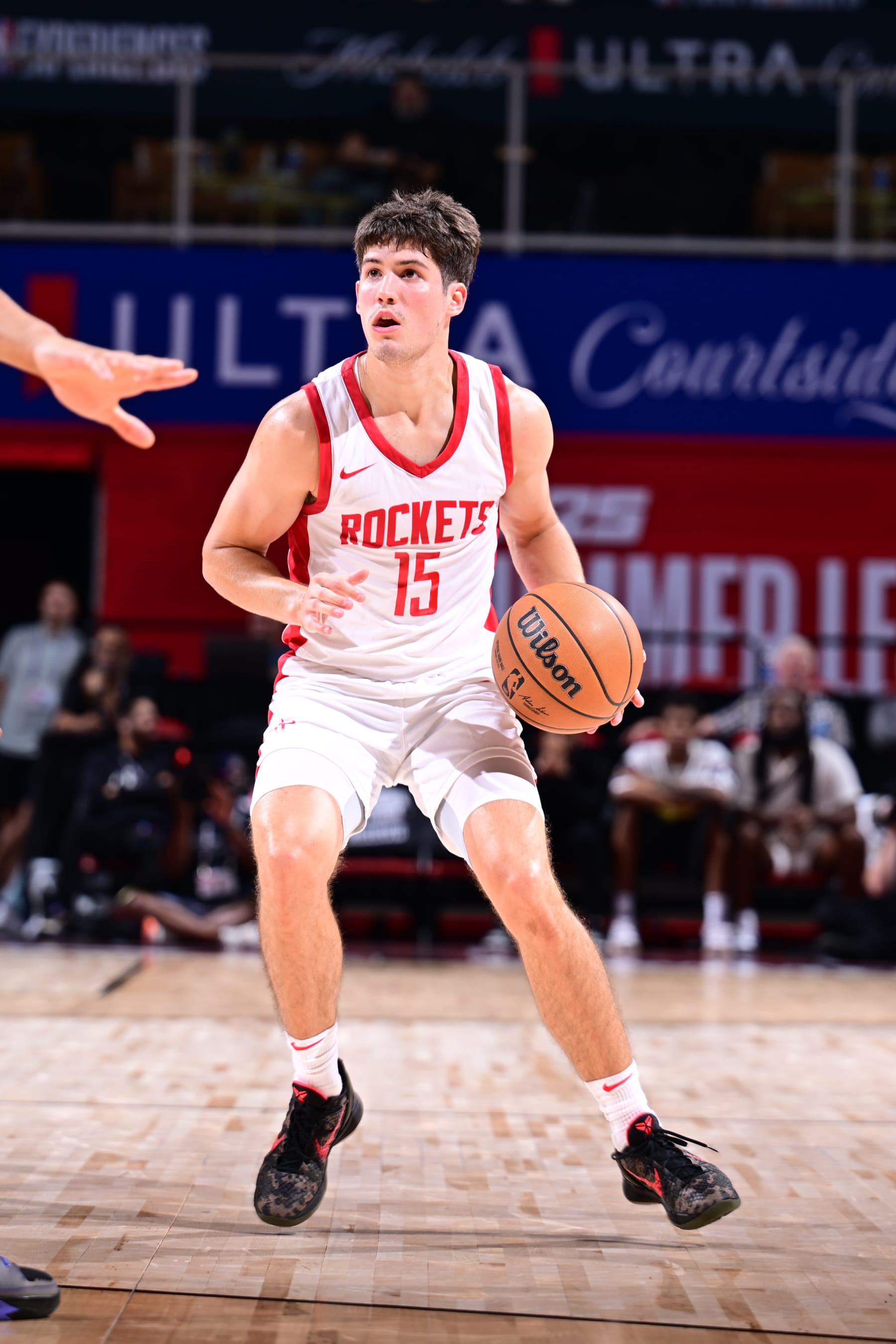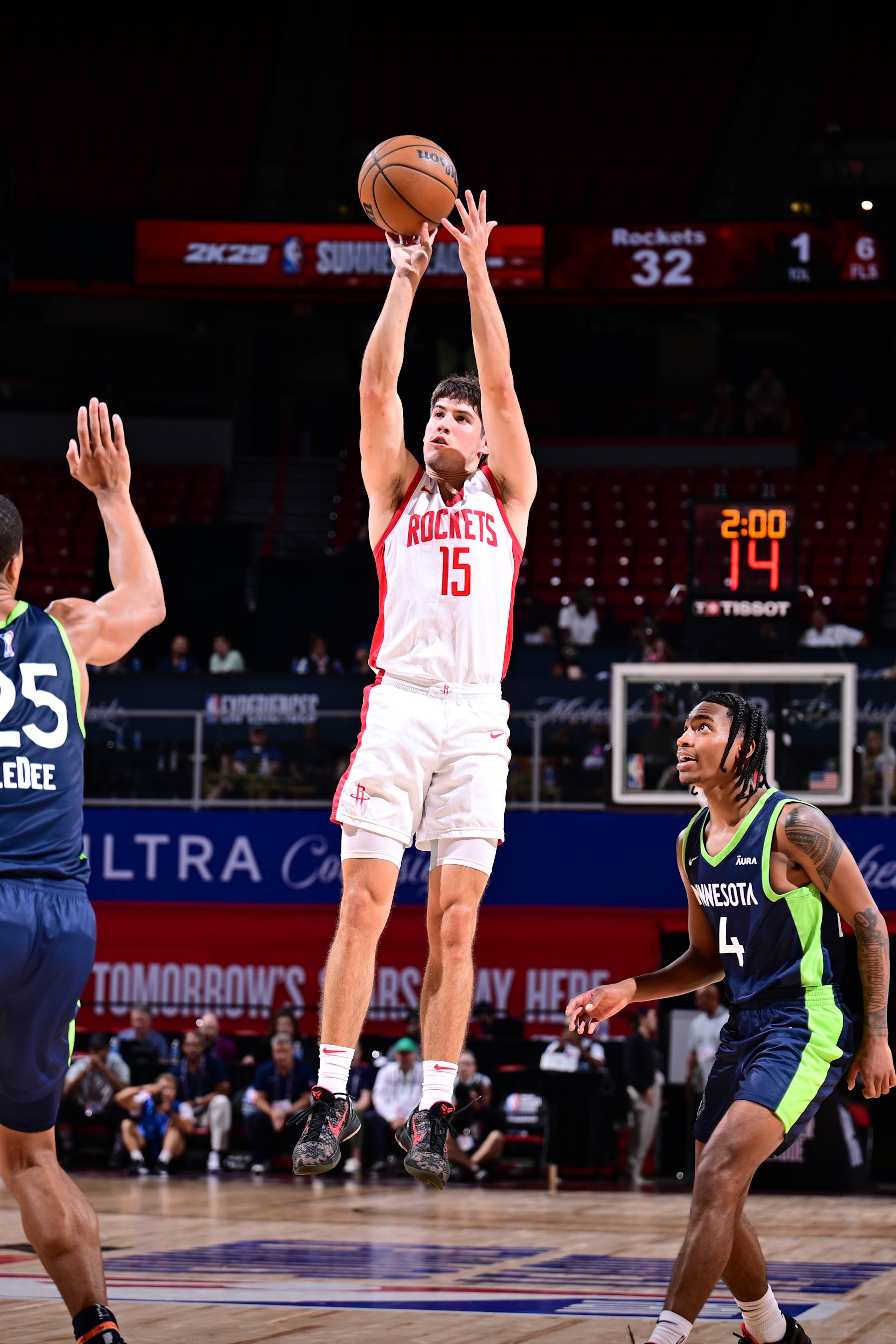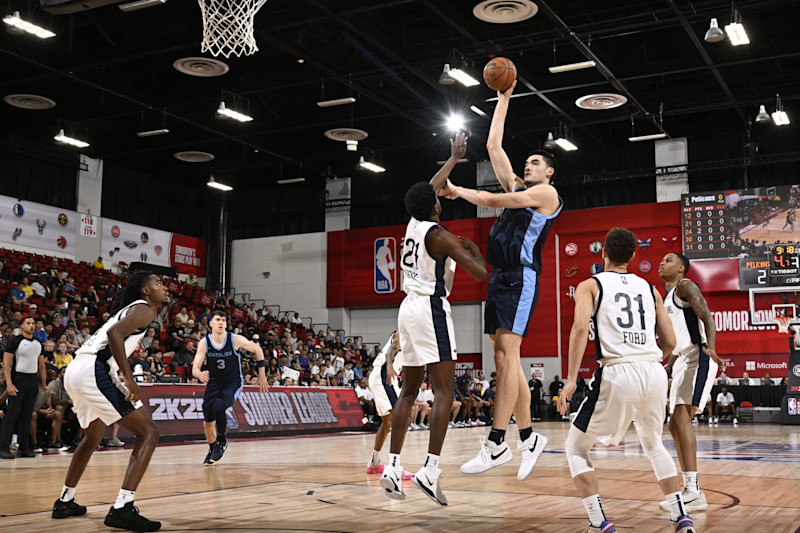Unless an injury takes out Chris Paul, Mike Conley, Tyrese Maxey or Keyonte George, Bub Carrington may be looking at the most point-guard usage among rookies.
Stephon Castle could wind up starting, but Paul will take on heavy playmaking responsibilities. And Rob Dillingham, Jared McCain and Isaiah Collier are all currently slated for backup roles that value their scoring.
Carrington has the clearest path to the lead ball-handler job, especially during the second half of the season, when the Washington Wizards will prioritize their rookies and 2025 lottery position.
Tyus Jones also signed with the Phoenix Suns, and Malcolm Brogdon looks like a midseason trade candidate with his expiring contract.
Carrington backed up his 5.2 assists per game at Pittsburgh with 5.2 assists during summer league. He makes smart reads off the dribble in ball-screen and isolation situations. At 6’4″ in a potential lineup with shot-makers Jordan Poole, Kyle Kuzma and Corey Kispert, plus Alex Sarr who can both pick-and-pop or roll, Carrington has the positional size, surrounding shooting weapons and an athletic finisher, which should allow for his previous passing numbers to translate.
Blocks: Alex Sarr

Stephen Gosling/NBAE via Getty Images
The battle for top rookie shot-blocker figures to be close between Alex Sarr, Donovan Clingan, Zach Edey and Yves Missi.
Sarr right now has to be the favorite based on his expected playing time, 7’1″ size and mobility and NBL numbers (8.0 block percentage). Despite the Washington Wizards signing Jonas Valančiūnas, who could force Sarr to spend more time defending away from the basket, a projected 30-plus minutes per game should be enough for the rookie to consistently make plays on the ball, whether it’s as a paint anchor or weak-side rim-protector and perimeter shot-contester.
A projected backup role puts Clingan at a disadvantage. And historically, Edey doesn’t block shots at a top-notch rate, though improved foot speed has elevated his defensive playmaking ability and presence.
Missi is also a realistic candidate to lead the class in shot-blocking if the New Orleans Pelicans feel comfortable starting a rookie. But he’s not as long as Sarr, who’ll also have more freedom to play through mistakes for a rebuilding Wizards team.
Steals: Reed Sheppard

Adam Hagy/NBAE via Getty Images
A 4.6 steal percentage at Kentucky led all drafted players and highlighted Reed Sheppard’s signature defensive anticipation.
He’s demonstrated an unteachable knack for jumping opponents’ moves/decisions and passing lanes. Special hand-eye coordination and hand speed should continue translating to strips and deflections, regardless of the situation.
Zaccharie Risacher, Stephon Castle and Rob Dillingham may also wind up playing more minutes per game. And Sheppard should still rack up more steals with how far superior he is at making reads with lightning-quick reactions on the ball.
Risacher and Castle still possess more defensive value/upside than Sheppard, who could have difficulty containing explosive ball-handlers or defending bigger guards. He’ll create one to two turnovers per game, while Risacher and Castle have the chance to effectively contest/change dozens of shots.
3-Pointers Made: Reed Sheppard

Adam Hagy/NBAE via Getty Images
On paper, it can look difficult to picture Reed Sheppard playing enough minutes to put up significant numbers. But coach Ime Udoka may find his particular skill set—plus his readiness to execute it—too useful for this particular rotation.
The Houston Rockets last year ranked 12th in three-point attempts and tied for 23rd in three-point percentage. While Sheppard was able to showcase some hidden creation during summer league, Udoka will mostly value the 52.1 percent three-point stroke his No. 3 pick unleashed at Kentucky.
He was over 50 percent on both catch-and-shoot and pull-up threes, per Synergy Sports.
Sheppard, whose efficiency, decision-making and impact on winning last season translated to a box plus-minus that was top-15 all-time among NCAA freshmen, could potentially steal minutes from Jalen Green if the former No. 2 pick doesn’t make a fourth-year jump.
Zaccharie Risacher may be Sheppard’s biggest challenger for the three-point-makes champion. The No. 1 pick should have a built-in starting role, and he arrives in Atlanta after a breakout season behind the arc. But we’ll still buy Sheppard’s superior consistency and the likelihood he’s able to carve out a regular role for a Rockets team that needs more shot-making, IQ and connector play.
Field-Goal Percentage: Zach Edey

David Dow/NBAE via Getty Images
Zach Edey shot 62.3 percent last year on a whopping 33.6 percent usage. That usage will drop in Memphis, particularly in one-on-one situations. The majority of his scoring attempts will come from drop-offs to the dunker’s spot, rolls/lobs and putbacks. At 7’4″, 300 pounds, Edey is set up with the elite tools, a tight shot diet and the gravity/playmaking of Ja Morant and Desmond Bane to finish at an ultra-efficient rate.
Edey looks poised to lead all rookies in dunks after leading college basketball.
Even against NBA centers, he’ll also still have advantages in the post using his unmatched body, 7’11” wingspan and signature jump hook.
Yves Missi may be Edey’s main competition, though a limited 7’2″ wingspan (for his size/position) and lack of lower body strength will lead to more contested shots inside. A green light to experiment from three could also hurt Donovan Clingan’s chances of scoring with more efficiency than Edey.
Leave a Reply